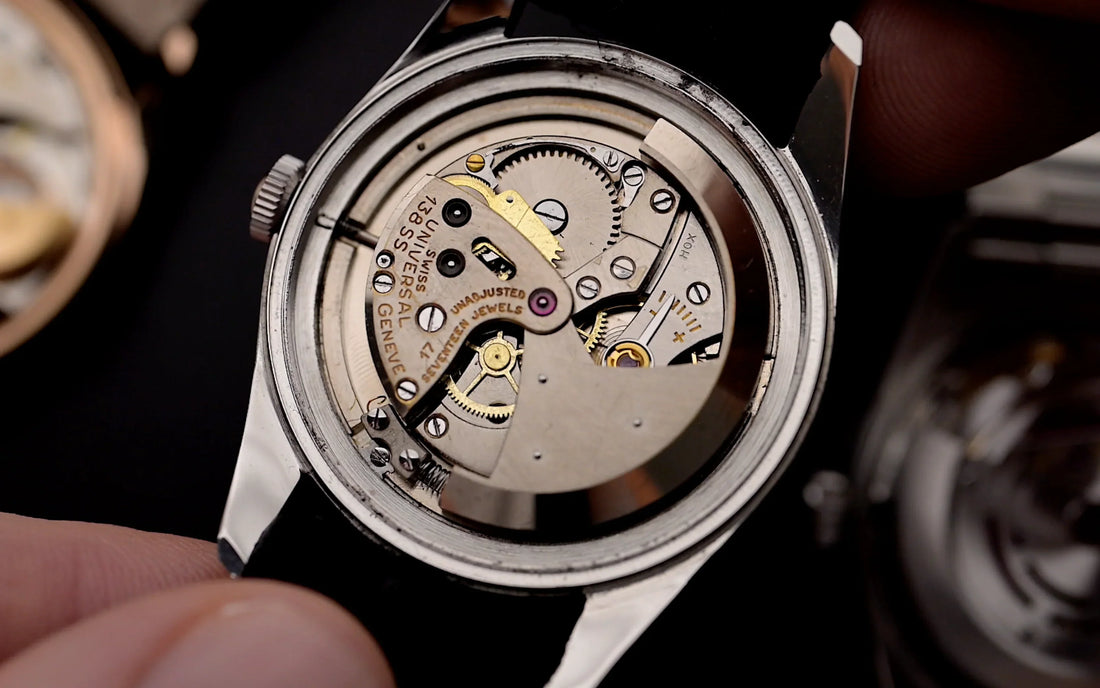
Why Is It Hard to Make Watches 100% in the USA?
Share
Made in USA vs. Assembled in USA: What’s the Difference?
When you see a product labeled “Made in USA,” it’s easy to assume that it was created here. But there’s more to it than that. At Anova Chicago, we’ve done our homework on the rules around these terms, and we’re here to share what we’ve learned in a way that makes it easy to understand.
What Does "Made in USA" Really Mean?
"Made in USA" is a label regulated by the U.S. Federal Trade Commission (FTC). For a product to be called “Made in USA,” it has to be “all or virtually all” made in the United States. The FTC suggests that U.S. manufacturing costs should make up at least 75% of the total cost, but there’s no official percentage set yet.
Different countries have their own rules for what qualifies as “Made in,” and they’re not all the same. Here's a quick comparison of what that looks like for some countries:
- Made in USA: "All or virtually all" made in the U.S.
- Made in Germany: "All essential manufacturing steps" done in Germany
- Made in Japan: "60% of product value, and final assembly"
- Made in Switzerland: "65% of product value, and final assembly"
- Made in Italy: "100% of product value, and final assembly"
Why Is It Hard to Make Watches 100% in the USA?
The U.S. once had a strong watchmaking industry, but over time, many watch companies shifted their manufacturing abroad. Brands like Timex and Hamilton, all moved their production overseas in the late 20th century, and today, it’s rare to find a watch made entirely in the U.S.
For American watch companies like Anova Chicago, it’s tough to make every tiny part of a watch in the U.S. because the infrastructure to produce these specialized components just isn’t here anymore. Most brands, including ours, use movements from Switzerland and Japan. These countries have the technology and expertise to make top-quality movements that we rely on for precision.
Assembled in USA: What’s the Difference?
At Anova Chicago, we assemble our watches right here in the U.S. While the movements and a few other parts come from trusted international suppliers, everything else—like putting together the cases, dials, and making final adjustments—happens in Chicago. We’re proud of that!
Why American Assembly is Important to Us
When we decided to assemble our watches in the U.S., we knew it would be more expensive. But it was a choice we made because we believe in supporting local talent and craftsmanship. We’ve seen how assembling our watches here gives us a better connection to our product and allows us to improve the design and durability with the help of our skilled assembly team.
Looking Toward the Future
True "Made in USA" watches are rare, and they’re generally very expensive because they require manufacturing most of the parts here. But that doesn’t mean we aren’t working toward getting closer to that goal. We’re always looking for ways to bring more production back to the U.S. in the future, whether that’s sourcing more American-made components or working with U.S.-based suppliers.
At Anova Chicago, we’re committed to supporting American businesses while creating watches that stand the test of time.
Conclusion
So, what’s the difference between “Made in USA” and “Assembled in USA”? It’s simple: “Made in USA” means everything comes from the U.S., while “Assembled in USA” means the final product is put together here, but some parts are made elsewhere. Almost all U.S. watch brands today are assembled in the U.S. but do not have all their parts made here.
At Anova Chicago, we’re proud of our American assembly process. While we’re not quite at 100% “Made in USA,” we’re always working to bring more of our production back to the U.S. Our goal is to create high-quality, durable watches that support American craftsmanship—and we’re excited about the future.
